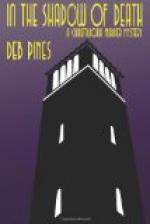As to the conduct of the burghers, we need only remark that their good behaviour pleased us exceedingly. There was no reason to urge them on; not one retreated. Though only a handful as compared to the enemy, they fought well till the foe was vanquished. One of them, young Liebenberg (familiarly known by the name of Matie) from Murraysburg, was shot through the head and succumbed at once. Another, young Hugo from Smithfield, was wounded in the foot. We had no other casualties.
The attack on Murray’s column was to a great extent incidental. Near his was another very much smaller camp. When I left that night it was with the intention to attack this smaller camp, for I had only 65 men at my disposal. In the darkness I lost my way, and so lighted on Murray’s column. It was unfortunate for them, but for ourselves we could have wished for no better accident.
In the Colonel’s letter-bag we found a letter addressed to his wife, dated 19th September, 1901, and written the very day before his death. We purposed to forward that letter, but the following day the bag was retaken. Not only was it taken, but also the gun, while 20 burghers were captured and one—Myburgh—was killed. We were again surprised. Inconstant are the fortunes of war.
JAMES TOWN.
The villages in possession of the enemy were at length so thoroughly fortified that it was well-nigh impossible to seize them without sustaining great losses. Though they seemed impregnable, yet we were sometimes compelled by sheer necessity to attack them. Beyond expectation we now and again succeeded in inducing the garrison to surrender. Such was the case at James Town, a village in the Eastern Province of the Cape Colony.
Late one afternoon in the month of July, 1901, I set out to this village to reconnoitre it in person. Unobserved, I reached the summit of a small hill, about a mile from it. Through my field-glasses I carefully noted the various forts, and there and then planned an attack. The next morning I knew exactly what to do.
At 2 A.M. Commandant Myburgh, Commandant Loetter, and myself, with some 60 men, were in the saddle and on our way to James Town. What will be the issue? Shall we succeed? Can we surprise the enemy? Such questions we put to ourselves as we rode on in the darkness and silence of the night to accomplish the work of destruction.
The spot we had in view was a kopje, situated to the north of the village. Here the enemy’s camp was located. As this kopje was the key to the village, it was necessarily very strongly fortified. We knew that if we could only occupy that hill, the rest would be easy work. Before dawn we were close to the camp. A few minutes more and we shall grimly salute our sleeping brethren. Silently we approach them. We are keenly on the alert for the pickets, whom, least of all, we wished to disturb. Behold! something in the darkness—what may that be? To be sure, two human forms! Hush! they are slumbering. Noiselessly we draw nearer, reach them, seize their rifles, and then—wake them. They are our first prisoners; our way to the camp is open, safe and sure.




